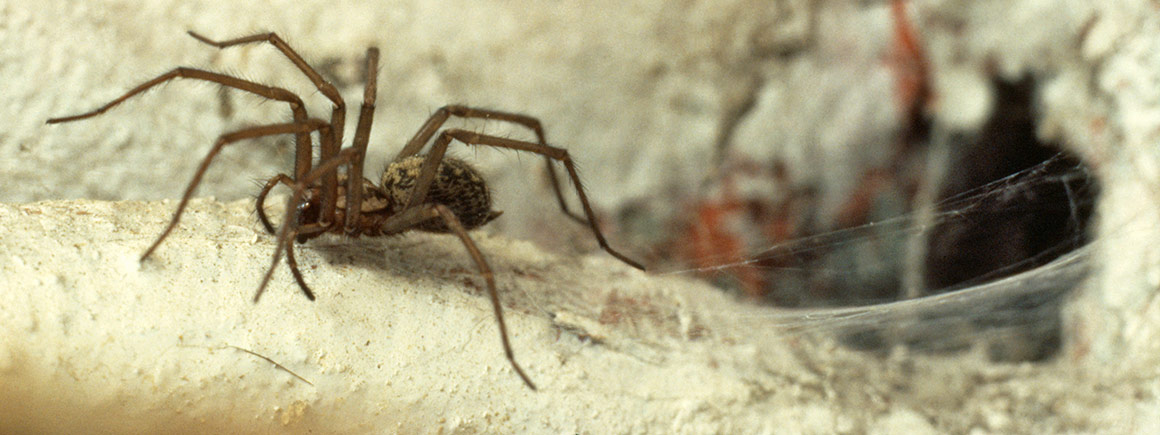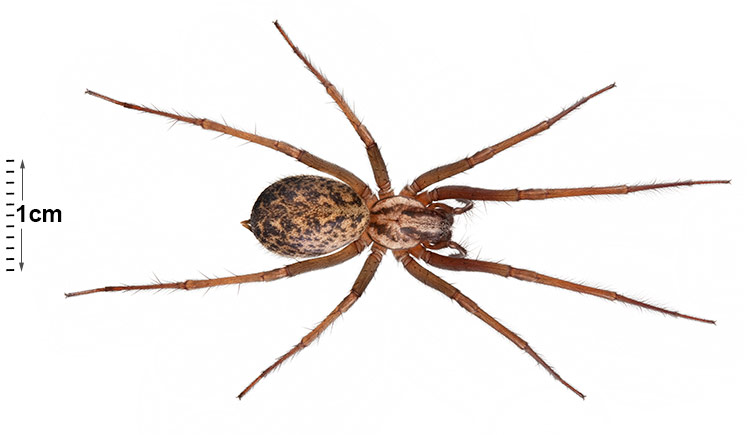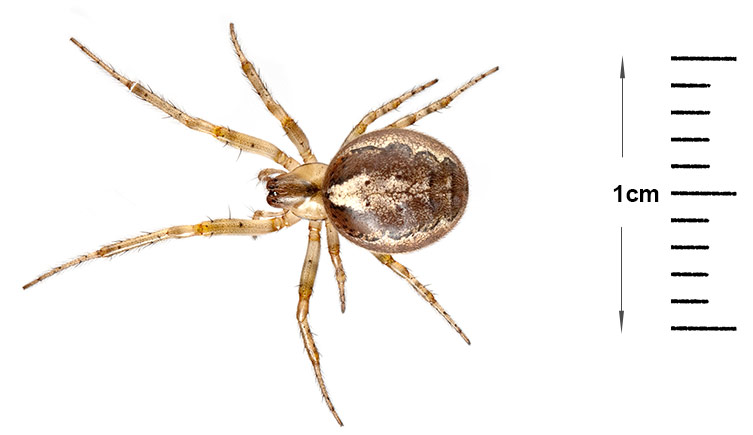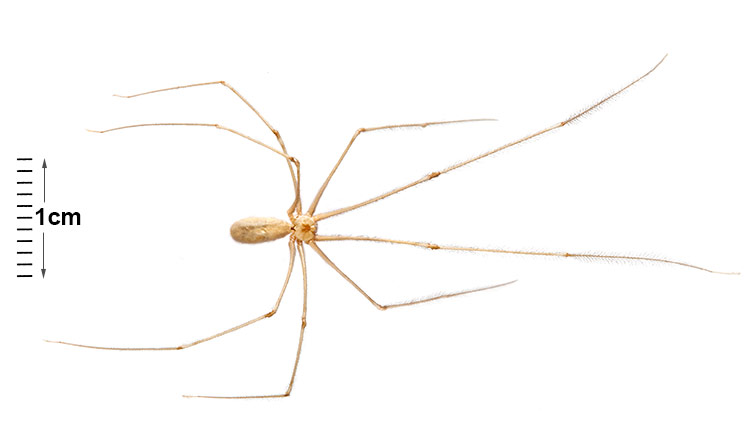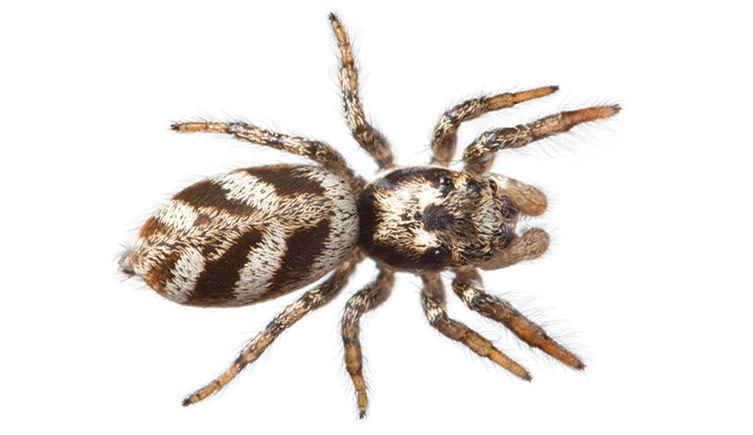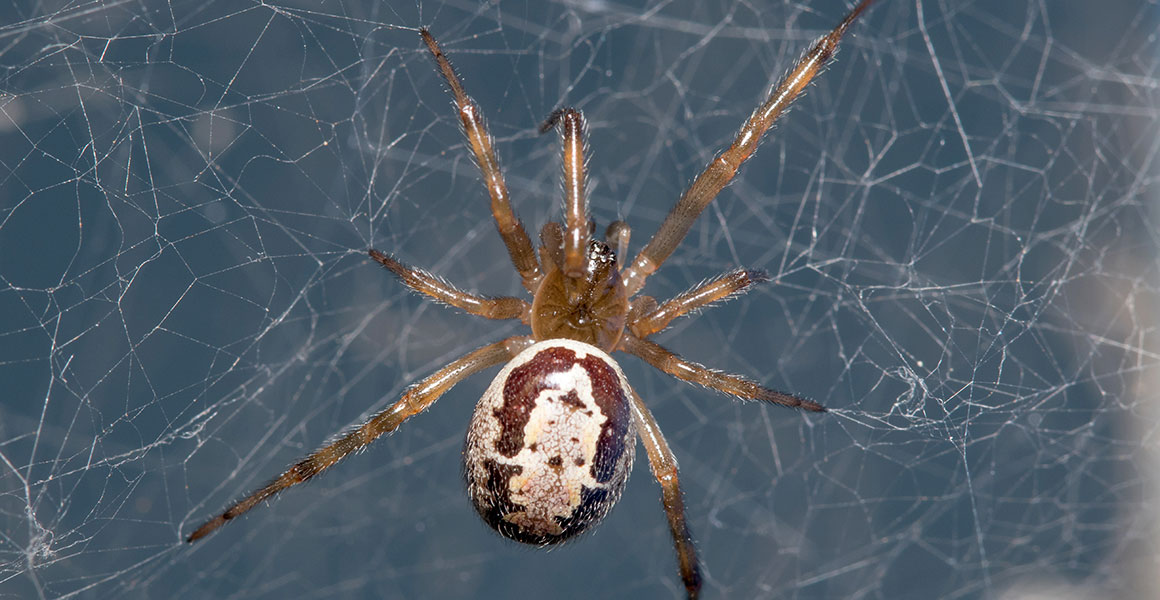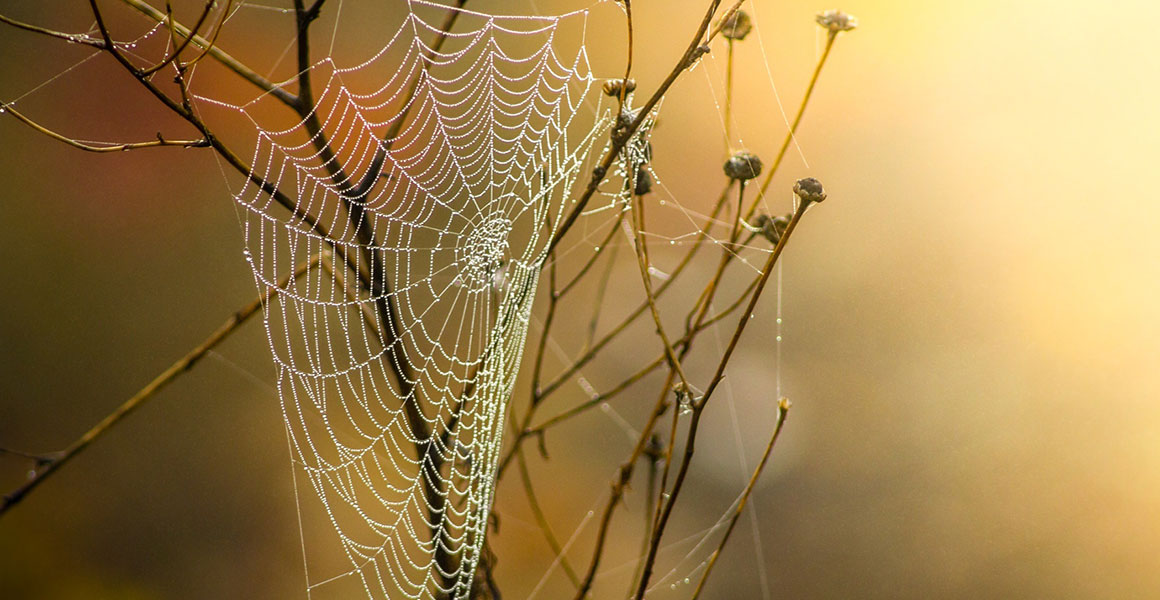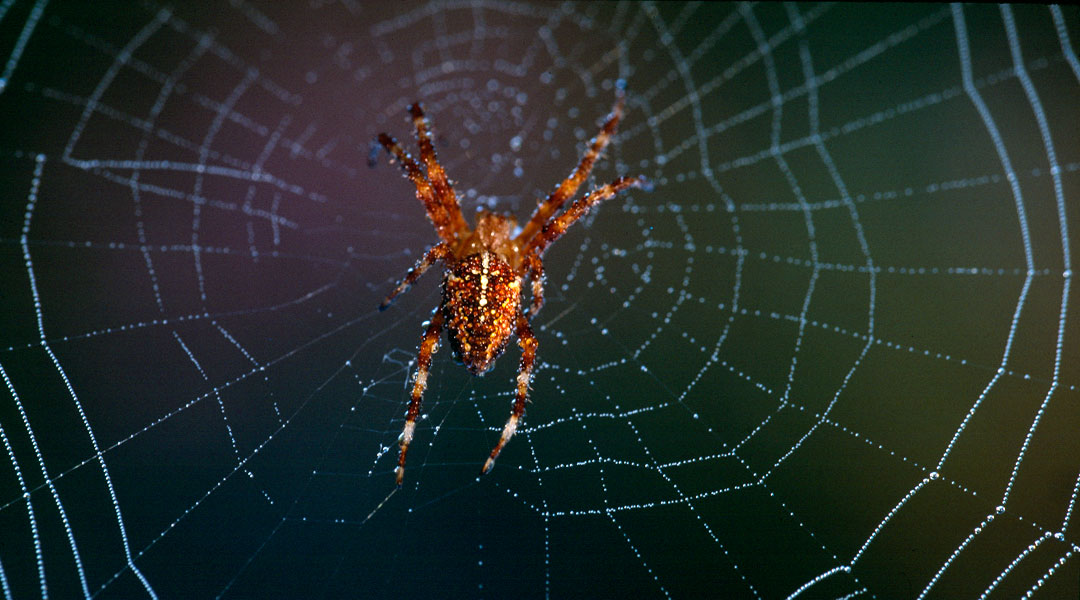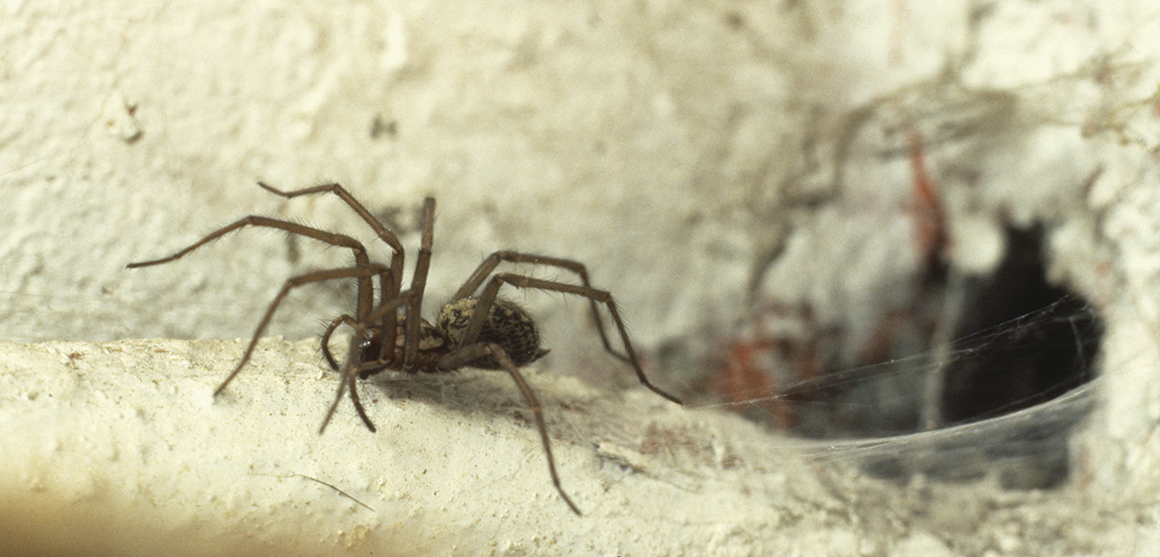Can spiders bite?
All spiders can bite - that’s how most subdue and kill their prey - but only a small number have fangs that are strong enough to pierce human skin.
Spider bites are quite rare, so there is generally no cause for concern if you see spiders in your home.
Of the 650 species of spider found in the UK only about 12 species have been recorded as being able to bite us and these are larger spiders. Of these, only two or three have been known to give a significant or unpleasant bite. Symptoms have usually been described as localised pain and swelling. In the rare event of symptoms more acute than these, medical advice should be taken.
If you pick up a spider, as with any living creature, you should remember that it is delicate and handle it with care and respect.
What are the largest and smallest spiders in the UK?
The largest spider found in the UK is the Cardinal Spider (Tegenaria parietina). Male examples have been recorded with an impressive 12 cm leg span. By comparison the smallest species of ‘Money spiders’ (family Linyphiidae) have a leg span of little more than 2 mm.
Spiders found in fruit
Spiders that are not UK species are occasionally found in imported fruit such as grapes or bananas; these can include species that are more seriously venomous.
If you find spiders under these circumstances it is always worth seeking advice. You can get these identified by emailing an image to the Museum's identification service.
